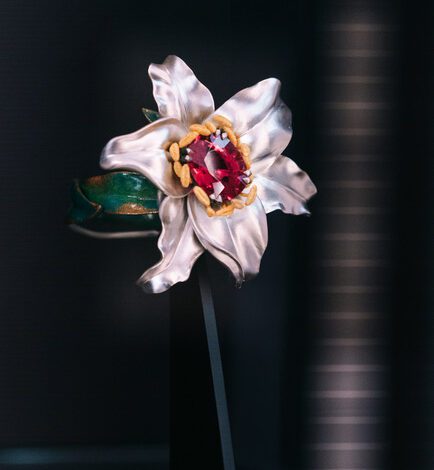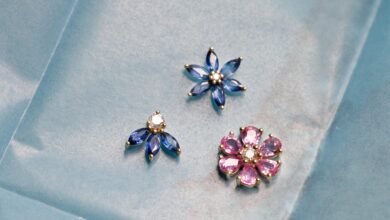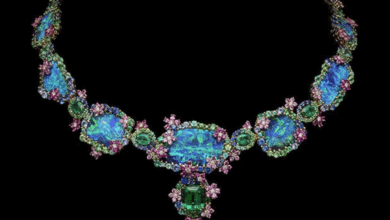Anna Hu’s White Lily bangle joins British Museum’s permanent collection
The bangle itself, conceived as the curling stem of the flower, is crafted in a mix of gold, brass and silver, hand-painted in green enamel to create the aged effect of patinated bronze

Register to get 1 free article
Reveal the article below by registering for our email newsletter.
Want unlimited access? View Plans
Already have an account? Sign in
Euro-based Asian jewellery artist Anna Hu Haute Joaillerie has announced that her Enchanted Lily Bangle has joined the permanent collection of the British Museum as the first contemporary jewellery.
The jewellery piece is on display in the museum’s Sir Joseph Hotung Gallery of China and South Asia.
The Enchanted White Lily Bangle aims to capture the “otherworldly beauty” of a white lily, in full bloom.
At the heart of the flower is a 30.48 carat brilliant-cut, purplish-red, natural rubellite, enclosed in stamens of rock crystal-infused yellow enamel on gold, and surrounded by hand-sculpted, softly lilting silver petals, finished with a silky, “opalescent” lustre.
The silver was acid-treated and sand-blasted to achieve this luminescence. The bangle itself, conceived as the curling stem of the flower, is crafted in a mix of gold, brass and silver, hand-painted in green enamel to create the aged effect of patinated bronze. The complex process, which took over six months, involved the specialist expertise of more than 10 artisans.
As with all her work, in The Enchanted White Lily bangle, Hu fuses influences and imagery from East and West, reflecting her personal story; her Chinese roots and her training as a classical musician when she was young.
In this creation too she brings together her twin passions of art and music, drawing inspiration from the lilies depicted in the traditional Chinese flower paintings, of Yun Shouping, Qing dynasty (1633-1690), and from Robert Schumann’s ‘Poet’s Love’, Op 48-111.
In the Enchanted White Lily bangle, curator Jessica Harrison-Hall, head of the museum’s China section, said she saw the historical and cultural significance of “the dialogue between antiquity and modernity, between East and West, and the spirit of the grand tradition of Chinese court jewellery”.
Harrison Hall said: “When I first laid eyes on it, I was immediately captivated by its extraordinary beauty—something unique and refreshingly different, especially with its contrasting textures. Instantly, I felt a connection to 19th-century court jewellery, and I could see how it resonated with the historic holdings of the British Museum. It was clear that this piece would fit seamlessly into our permanent collection, complementing our historic treasures.”







